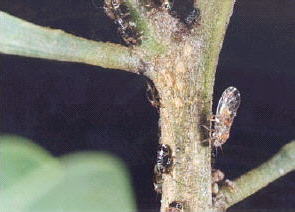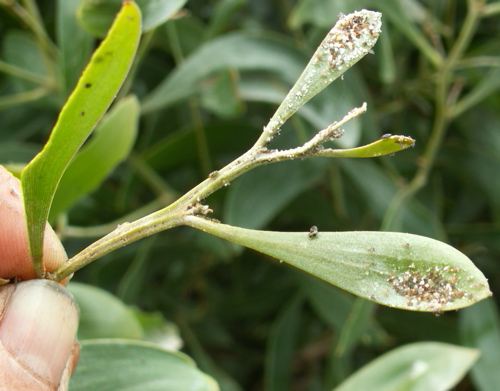PESTS AND DISEASES OF FORESTRY IN NEW ZEALAND
Psyllids, Acacia


Acacia psyllids Acizzia acaciae, A. uncatoides and A. albizziae originate from Australia, and are one of the most common insects associated with Tasmanian Blackwood. By damaging the shoot tips psyllids contribute to malformation and multileadering. When psyllids were controlled in trials involving the regular application of insecticide, tree height growth was increased by 40 to 50% compared to unprotected trees.
Psyllids feed on the phloem of the growing shoots, chiefly sourcing nitrogen, and excreting waste sugars as honeydew. The honeydew is a suitable growth medium for sooty moulds, which enter the plant via puncture wounds made by the insect's feeding mouth parts. The sooty moulds cause localized cell necrosis and shoot die-back, which results in multi-leadering. The combined effect of the psyllids and fungi is to reduce the vigour of the tree, and to bring the seasonal growth to a premature close.
Psyllids are present throughout the year, with population peaks often in late spring, and at the completion of the growing season in autumn. Eggs are mostly oviposited on newly developing foliage; however, at high population levels, eggs can be found on all parts of the plant.
(From The Blackwood Growers Handbook)

 Farm Forestry New Zealand
Farm Forestry New Zealand

